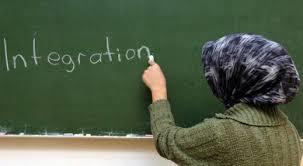
Behind a variety of practical implementations of religious education at German schools, two trends are emerging, the first one being the increasingly established presence of Islam and the second one the growing interest of Protestants and Catholics in cooperating instead of keeping separate syllabuses, writes Alexander Benatar in the most recent issue of Materialdienst der EZW (4/2020). According to article 7 of the Fundamental Law (Grundgesetz or the German Constitution), “religion classes form part of the ordinary curriculum in state schools, except for secular schools,” and “religious instruction is given in accordance with the tenets of religious communities.” In Germany, the federal states (Länder) are in charge of education, and there is no unitary approach regarding the way of integrating religious education into school teaching, resulting into a variety of (evolving) systems. In Baden-Württemberg, not only the historical churches—Protestants, Catholics and Old Catholics—can provide their own, denominational religious education at schools, but also Jews, Syrian Orthodox, Alevites, Orthodox, and Muslims (currently in a test phase). In Hamburg, a radically different model of common religious education for all pupils (including those without a religious affiliation) has been adopted, with multireligious support. In Lower Saxony, Protestant, Catholic, Jewish, Alevi and Muslim religious education must be made available, provided at least 12 pupils of the same religious tradition can be gathered for the course and qualified teachers are available, while a course on “values and norms” has also been made available in consideration of the rising number of pupils without a religious affiliation.
In North Rhine-Westphalia, since 2018, schools are free to opt for a cooperative teaching between Protestants and Catholics at those places where denominational religious education of both churches previously existed. In Saxony-Anhalt, state authorities have no  intent to introduce Islamic religious education at this point and prefer Muslim pupils to visit a religiously neutral ethics course. Those examples show the variety of arrangements and a field constantly being reworked in order to adjust to changes in religion and society. The trend toward offering Islamic religious education has been clear in recent years, but less marked in the former states of Eastern Germany, where fewer Muslims are living. Since there is no unitary Islamic organization in Germany, it involves in each case selecting those who will have a voice in the design of the teaching (not without debates), or opting for a more academic version, not influenced by Muslim organizations and under direct state control. Regarding cooperative religious teaching associating Protestants and Catholics, Benatar sees it as a response to growing religious pluralism (primarily in cities) and increasing numbers of unaffiliated people. But this seems relatively easy in comparison with ambitious attempts such as the one implemented in Hamburg for offering a common “religious education for all,” with teachers being trained at an academy of world religions at the local university.
intent to introduce Islamic religious education at this point and prefer Muslim pupils to visit a religiously neutral ethics course. Those examples show the variety of arrangements and a field constantly being reworked in order to adjust to changes in religion and society. The trend toward offering Islamic religious education has been clear in recent years, but less marked in the former states of Eastern Germany, where fewer Muslims are living. Since there is no unitary Islamic organization in Germany, it involves in each case selecting those who will have a voice in the design of the teaching (not without debates), or opting for a more academic version, not influenced by Muslim organizations and under direct state control. Regarding cooperative religious teaching associating Protestants and Catholics, Benatar sees it as a response to growing religious pluralism (primarily in cities) and increasing numbers of unaffiliated people. But this seems relatively easy in comparison with ambitious attempts such as the one implemented in Hamburg for offering a common “religious education for all,” with teachers being trained at an academy of world religions at the local university.
(Materialdienst der EZW, Auguststrasse 80, 10117 Berlin, Germany; www.ezw-berlin.de)